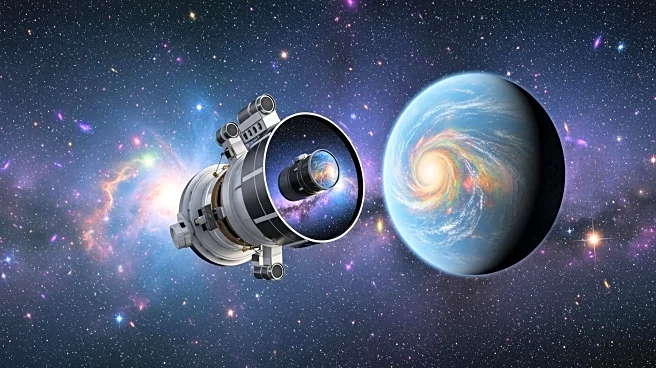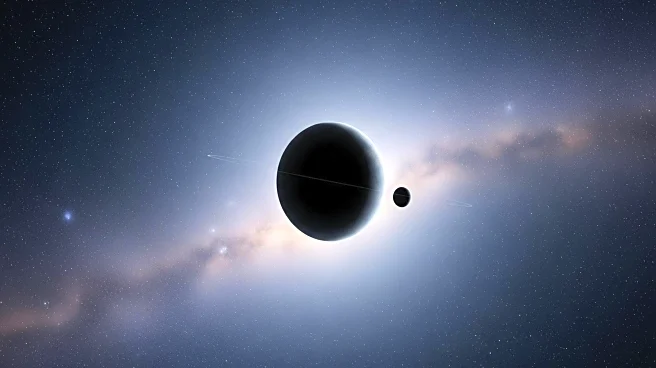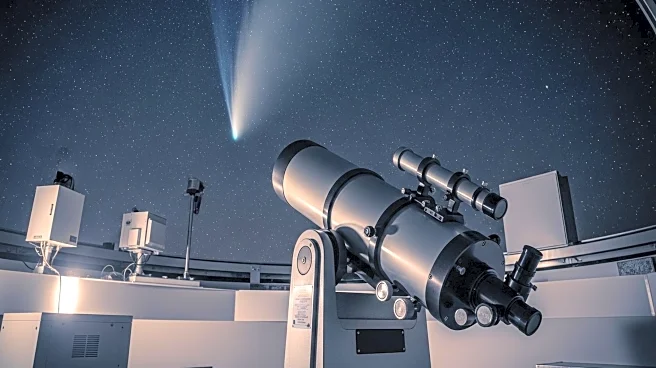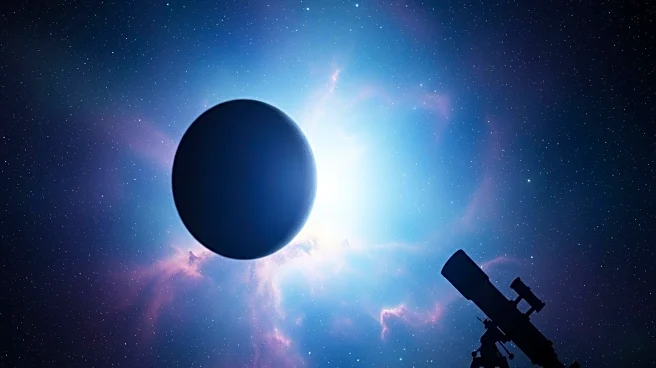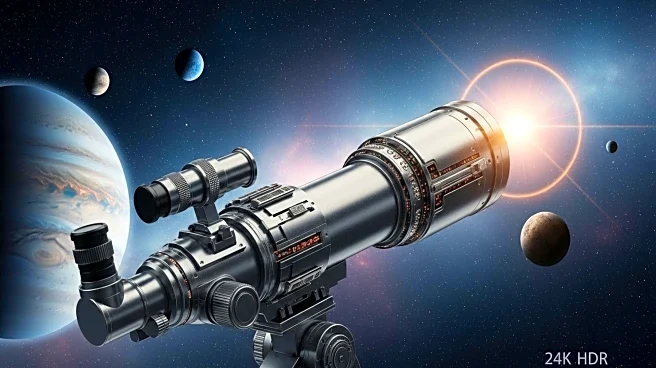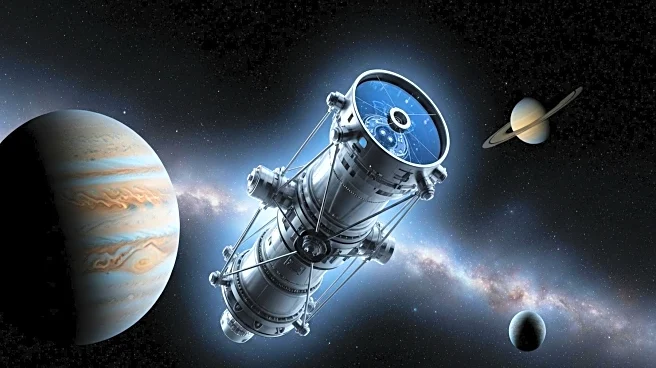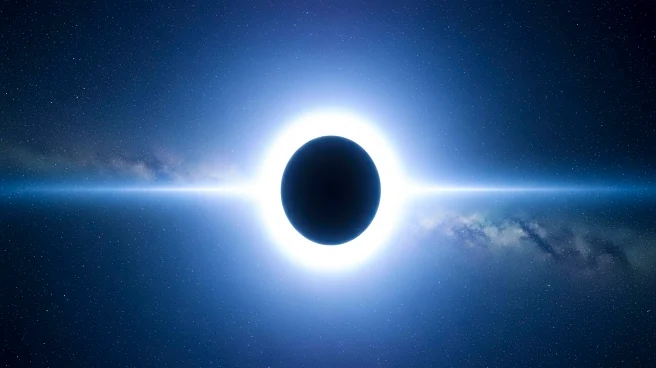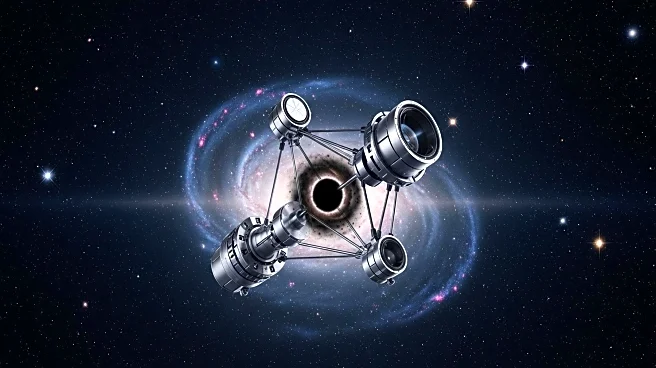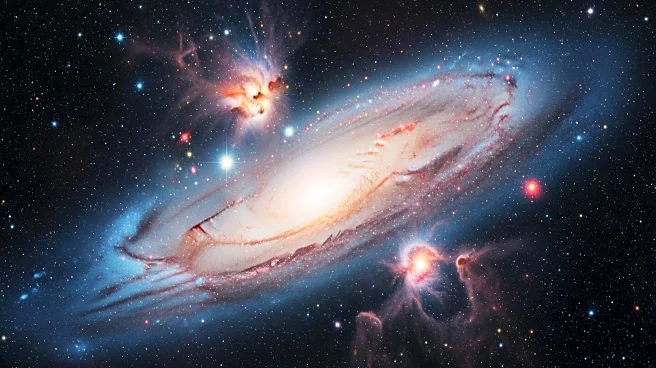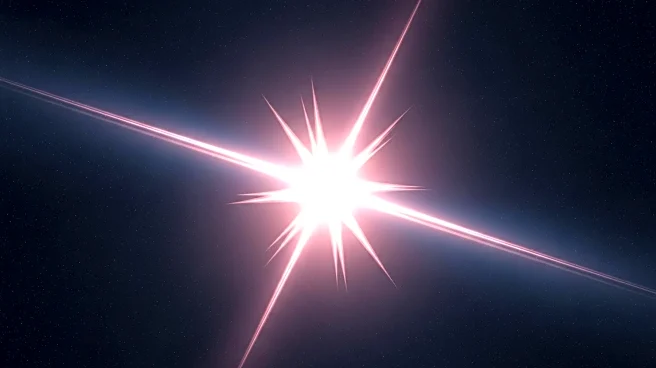What is the story about?
What's Happening?
The James Webb Space Telescope (JWST) has discovered an exoplanet, PSR J2322-2650b, orbiting a millisecond pulsar known as PSR J2322-2650, which is part of a 'black widow' system. This exoplanet is notable for its atmosphere, which is composed almost entirely of elemental carbon, specifically tricarbon (C3) and dicarbon (C2). This discovery challenges existing scientific models, as such elements are typically found in comet tails or flames on Earth, not in planetary atmospheres. The planet, a Jupiter-sized body, is tidally locked, with its dayside facing the pulsar and experiencing temperatures above 2000°C. The night side appears to be covered in soot, lacking distinct features. The carbon-to-oxygen and carbon-to-nitrogen ratios on this planet are significantly higher than those on Earth, presenting a mystery regarding its formation.
Why It's Important?
This discovery is significant as it challenges current scientific understanding of planetary formation and atmospheric composition. The presence of a carbon-rich atmosphere on PSR J2322-2650b suggests that there may be unknown processes at play in the formation of exoplanets within 'black widow' systems. This could lead to a reevaluation of existing models and theories in astrophysics. The findings also highlight the capabilities of the JWST in identifying and analyzing distant celestial bodies, potentially paving the way for further discoveries that could reshape our understanding of the universe. The implications extend to the search for extraterrestrial life, as understanding diverse planetary atmospheres is crucial in identifying habitable environments.
What's Next?
Scientists will need to revisit theoretical models to account for the unexpected atmospheric composition of PSR J2322-2650b. Further observations and analyses using the JWST and other telescopes may provide additional data to help explain the high carbon ratios and the planet's formation process. Researchers may explore alternative formation scenarios, such as white-dwarf mergers, to better understand the planet's unique characteristics. Continued exploration of 'black widow' systems and similar exoplanets could yield more anomalies, driving advancements in astrophysical theories and potentially leading to new scientific revolutions.
Beyond the Headlines
The discovery of PSR J2322-2650b's carbon-rich atmosphere raises questions about the diversity of planetary systems and the potential for unique chemical environments beyond our solar system. This could have implications for the search for life, as varied atmospheric compositions might support different forms of life. Additionally, the findings may influence the development of new technologies and methodologies for studying distant planets, enhancing our ability to detect and analyze extraterrestrial atmospheres.
AI Generated Content
Do you find this article useful?
